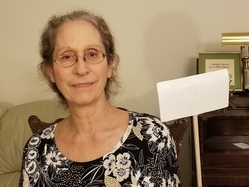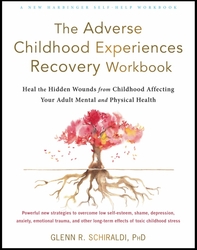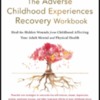by Glenn R. Schiraldi, Ph.D., author The Adverse Childhood Experiences Recovery Workbook
Accelerated Resolution Therapy (ART) is an evidence-based treatment for trauma and other stress-related conditions that is quick, effective, safe, and well-tolerated. Encouraging research has shown it to substantially reduce symptoms in adults of post-traumatic stress disorder (PTSD), anxiety, depression, acute stress, guilt, complicated grief, sleep problems, and pain, while increasing self-compassion and trauma-related growth—typically in 1-5 sixty-minute treatment sessions. Thus, it is briefer than current first line treatments for PTSD. It is showing great promise for rapidly and lastingly resolving many problems traced to adverse childhood experiences (ACEs).
ART utilizes eye movements (EMs), as the respected trauma treatment Eye Movement Desensitization and Reprocessing (EMDR) does, but ART changes the amount of EMs used, when they are applied, and their speed and consistency. ART is more directive than EMDR and adds many innovative strategies. ART requires no medication, homework, or verbalization of troubling details. Clients retain control of the sessions, sharing as many or as few details as they wish and controlling the pace. This is especially useful for clients who have difficulty talking about traumas. The ART therapist is a guide while the clients do their own work.
Guiding Principles
Most disturbing traumatic memory material is not typically situated in the verbal, logical left brain, but in the visual right brain, with its strong connections to brain regions that control emotions, bodily sensations, and action tendencies. Thus, ART first targets the images and associated physical and emotional reactions related to disturbing memories. Once these are settled and rewired, any latent negative thoughts embedded in the memory often change naturally. When treatment is finished, clients usually can recall the facts about the experience but without the image and disturbing physical and emotional upset.
EMs appear to facilitate a calming response in the brain, the weakening of disturbing memories, and the weaving of healing new material into disturbing memories. EMs also appear to promote reconsolidation, a process whereby fragmented trauma memories are recalled—including images, emotions, and bodily sensations—so that the brain can integrate the fragments and then change the entire memory.
Who IS ART For?
ART is for any individuals who are motivated to change, and are able to hold a thought and move their eyes comfortably.
A Typical Session
At intake, the therapist fully explains the ART process (“We’ll replace old traumatic images, so that you can remember the original trauma but without deep emotional upset. There’s no need to fear emotions. There’s a way through them. Treatment often takes just one session for trauma—and maybe more for ongoing problems such as substance abuse or eating disorders, where there might be a secondary gain, which is a reason to hold onto a problem.”). Clients are asked to think of a problem they’d like to resolve.
Each treatment session usually processes whatever the client chooses, and clients are asked, “How would you like to feel differently at the end of this session?” The session begins by calming the clients with EMs until they are ready to move to the next step. The clients make all the choices as ART proceeds.
The clients next engage in what researchers call “imaginal exposure.” This means that they will be imagining their trauma memory in order for the brain to process it.
Finally, clients rescript the problem, changing it in their minds in any positive way they desire. The client might also imagine moving to a brighter future that is free of suffering.
EMs are used to calm the client and help modify troubling bodily sensations, emotions, and/or images. The treatment is considered successful when the client can recall the original event without disturbing symptoms. Clients usually end sessions feeling positive, relieved, and unburdened.
With childhood trauma, the goal is to complete an ACE scene in a single session. Complex trauma usually takes more sessions, but processing the worst scene will often generalize to other disturbing scenes.
Innovative Use of Strategies
As needed, various strategies are creatively added to the protocol by skilled ART therapists who have completed intensive training. Some examples:
- Clients might imagine going back in their mind to complete “unfinished business,” say, by having an imagined conversation with an abusive caregiver or their earlier self, or to say goodbye to a deceased loved one—with EMs facilitating this strategy.
- If troubling sensations are not changing with the aid of EMs, the therapist might help the client to trace back to an earlier time, such as to an ACE, that elicited similar sensations, and process that scene with EMs.
- Humor, the opposite of trauma, can be used, such as imagining being protected by a bubble, which the perpetrator bounces off of.
- If trying to rescript a childhood scene with an abusive parent is stuck, the client might imagine going to a “parent store” to envision a loving new replacement scene.
Considerations
We don’t yet know if there are long-term side effects of ART, although to date, there are no known reports of any issues caused by ART. Important new studies are expected to enrich our understanding of ART and its effectiveness.
At present, ART offers an encouraging alternative to try: after other evidence-based treatments have failed; in conjunction with other evidence-based treatments; or as a first-line treatment for informed clients.
Resources
- ART website, acceleratedresolutiontherapy.com. Find an ART therapist and ART research references.
- The Rosenzweig Center for Rapid Recovery: Accelerated Resolution Therapy, erasetraumanow.com. Laney Rosenzweig is the developer of ART.
- International Society of Accelerated Resolution Therapy, is-art.org. For mental health practitioners. Annual conference.
References
- Schiraldi, G. R. (2021). The Adverse Childhood Experiences Recovery Workbook: Heal the Hidden Wounds from Childhood Affecting Your Adult Mental and Physical Health. Oakland, CA: New Harbinger Publications.
- Rosenzweig, L. (2021). Too Good to Be True? Accelerated Resolution Therapy. Bloomington, IN: Archway Publishing.
ART founder Laney Rosenzweig, LMFT, with card used for eye movements.
Photo credits
- Title image: Hero Images/istockphoto
- Courtesy Laney Rosenzweig
About the Author
Glenn R. Schiraldi, PhD, has served on the stress management faculties at The Pentagon, the International Critical Incident Stress Foundation, and the University of Maryland, where he received the Outstanding Teacher Award in addition to other teaching/service awards. His fourteen books on stress-related topics have been translated into seventeen languages, and include The Adverse Childhood Experiences Recovery Workbook, The Self-Esteem Workbook. The Resilience Workbook, and The Post-Traumatic Stress Disorder Sourcebook. The founder of Resilience Training International (www.ResilienceFirst.com), he has trained laypersons, emergency responders, and clinicians around the world on the diverse aspects of stress, trauma, and resilience.





Comments (0)